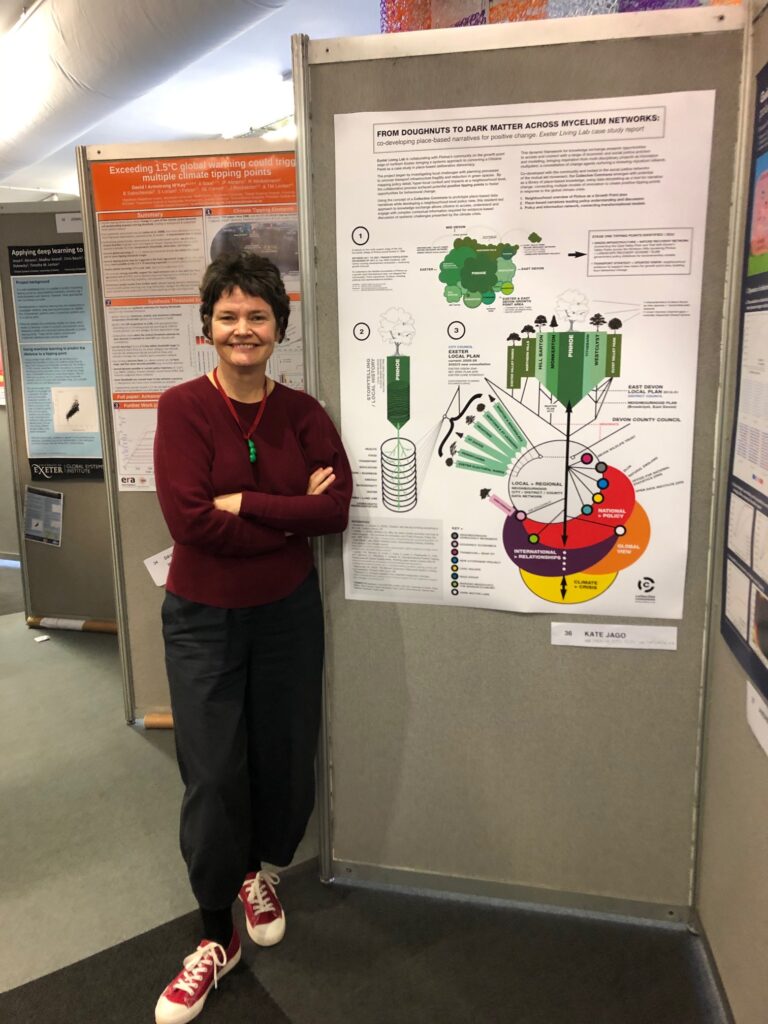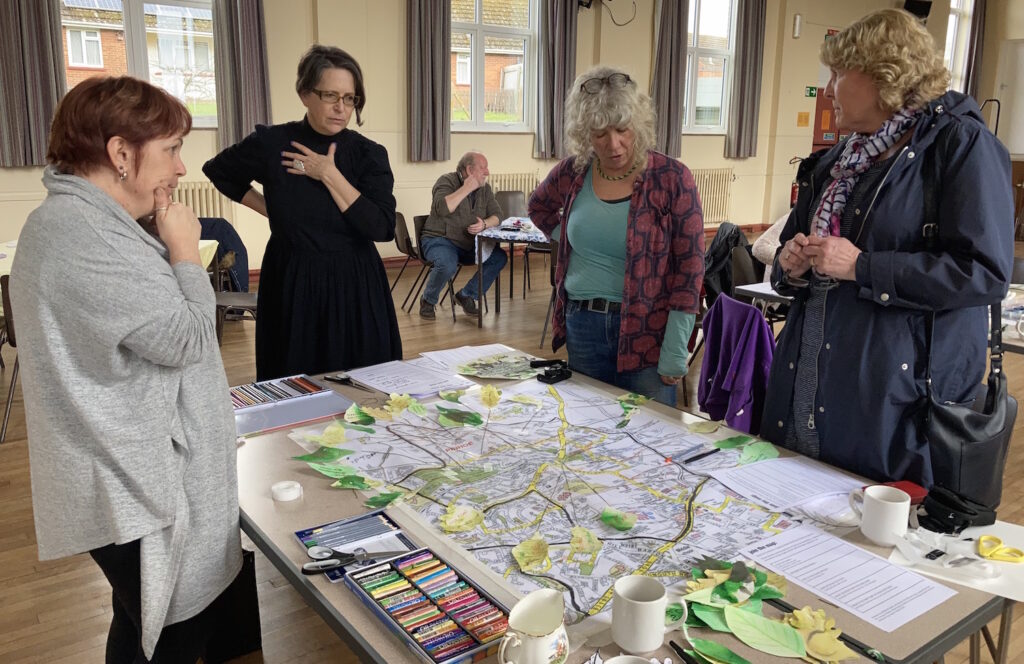We’re co-developing a Collective Commons with the community of Pinhoe: www.pinhoe.org

From Doughnuts to Dark Matter across Mycelium Networks: co-developing place-based narratives for positive change

Mapping policy detail and impacts at a neighbourhood level, our creative, collaborative approach surfaced multiple opportunities to influence tipping points and inspire positive change
Pinhoe sits on the growth-point edge of Exeter, crossing city, district and county council boundaries. Our project began by investigating local challenges with planning processes, uncovering systemic transport infrastructure fragility and dramatic reduction in green infrastructure.
We’re working with the community to develop a neighbourhood-level policy view as a place-based data commons. This resident-led approach to knowledge exchange helps communities access and engage with industry-specific information required for evidence-based discussion of systemic challenges.
Our narrative framework presents opportunities to access, investigate and connect with a range of economic and social justice activism and modelling, bringing inspiration from multi-disciplinary projects as innovation multipliers: a constellation of change agents.
Co-developed with the community and rooted in the social justice networks of the mutual aid movement, Collective Commons emerges as a library of place-based knowledge: using storytelling as a tool for narrative change, connecting multiple models of innovation to create social tipping points